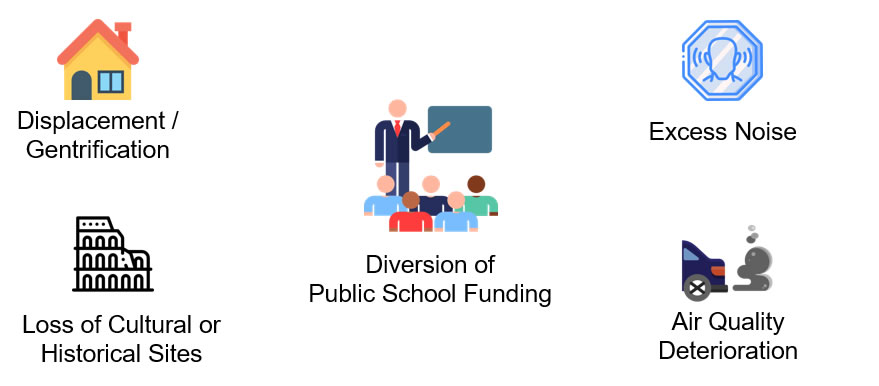« PreviousNext »
5 Policy and Institutional Risks
Policy and Institutional Risks – Social Equity
Risks generated by the VC technique/project that has a disproportionate impact on low-income or other disadvantaged communities.

Example 10: When development or re-development associated with a TIF district project affects low- income/minority residents.
TIF districts are used to pay for projects that spur development or redevelopment in blighted neighborhoods, sometimes disproportionally affecting low-income residents through gentrification and displacement.
Existing low-cost housing units are cleared and replaced with higher income units or commercial development, forcing the migration of lower income and minority residents.
Mitigation: Utah requires the development of affordable housing in Housing and Transit Reinvestment Zones. California and Portland, Oregon have similar requirements for TIF districts.
Utah: U.C.A. 63N-3-603; Portland HOU-1.06; California HSC Division 24 (33000 – 37964)
Policy and Institutional Risks – Administration and Transparency
Risks arising from limited transparency or communication of risk cost, risk allocation rationale, and the risk-return decision-making including the non-disclosure of unknown project risks.
Example 11: Lack of transparency in the distribution of funds in TIF districts.
One study found that in some instances, TIF district project funds were redistributed without informing the public in a way that could be easily understood:
- How funds were distributed between projects in low-income areas vs. projects in higher-income areas.
- How much property tax revenue was diverted away from public schools.
Potential mitigation measures:
- Develop a TIF district master plan
- TIF district capital budget to allocate district resources
- TIF performance monitoring
« PreviousNext »
